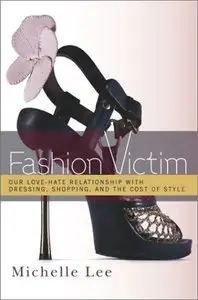Michelle Lee, "Fashion Victim: Our Love-Hate Relationship with Dressing, Shopping, and the Cost of Style"
English | ISBN: 0767910486 | 2003 | PDF | 352 pages | 3,3 MB
English | ISBN: 0767910486 | 2003 | PDF | 352 pages | 3,3 MB
A riveting look inside the fashion world that exposes the truth about shopaholics, sweatshops, and celebrity closets.
Fashion—from the $1500 Prada bag to the $30 Kate Spade knock-off sold on the sidewalk—has been transformed from a commodity reserved for the elite to a powerful presence in mass market culture. As a society, we are obsessed with fashion and style, racking up credit card debt to support compulsive shopping habits, scouring magazines for the latest trends to buy, and focusing more on who’s wearing what at the Oscars than on who’s winning. In Fashion Victim, award-winning journalist Michelle Lee blows the lid off the fashion industry, and spotlights the fascinating—and often disturbing–ways in which it is morphing our culture, our economy and our values.
Dishing on the lords of the label, including designers like Donna Karan, Calvin Klein, and Kenneth Cole, Fashion Victim reveals a world that is sometimes grotesque, sometimes glitzy, but constantly intriguing. From bear hides to the Victorian bustle, Lee traces the role of fashion through the ages, taking us from the dawn of ready-to-wear in 1865 to the modern trend cycles that incite us to clamor after leg warmers, bumster trousers, and Manolo Blahniks. She details the birth of “Speed Chic”—the hamster wheel of style that keeps us stuck in an endless cycle of consumption and has become the crack-cocaine of fashion, providing us with a temporary high until we spot the next trend and reach for our wallets. She also explores the phenomenon of “McFashion,” the uncanny proliferation of retailers like the Gap and Old Navy that are creeping into every town in America and stripping us—and the designers they knock off–of individuality and innovation. And she ultimately probes the human cost of fashion’s decadence, including the distorted perceptions of beauty fueled by high-end designers, the dangers of dry cleaning, and the ugly financial disparity between those who make the clothes and those who buy them.
An unprecedented look behind the runway at the forces and personalities driving this $200 billion dollar industry, Fashion Victim is a stylish, provocative and highly entertaining contribution to the analysis of American popular culture.



